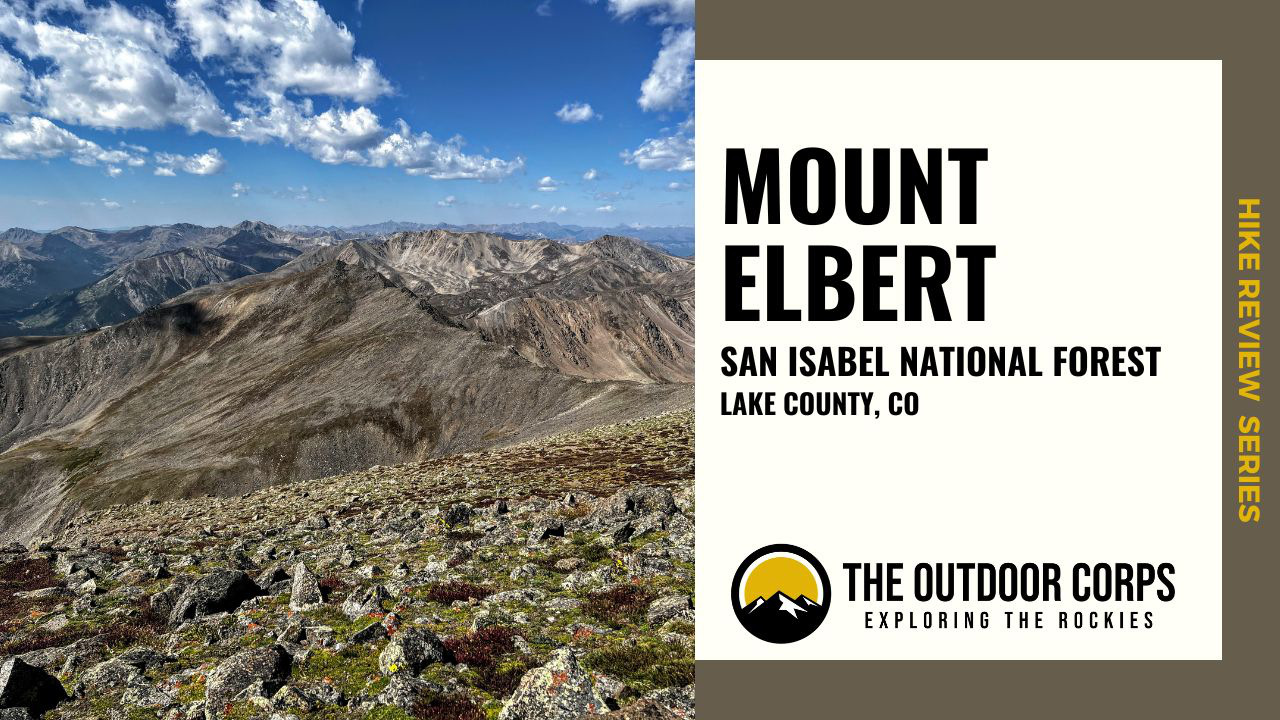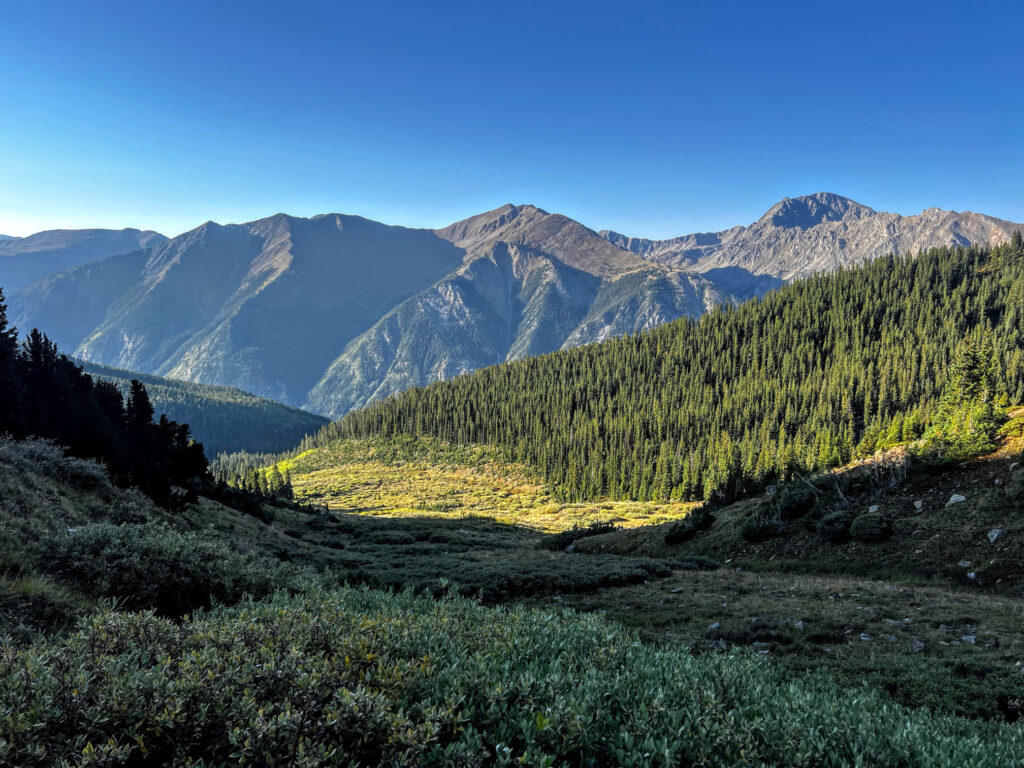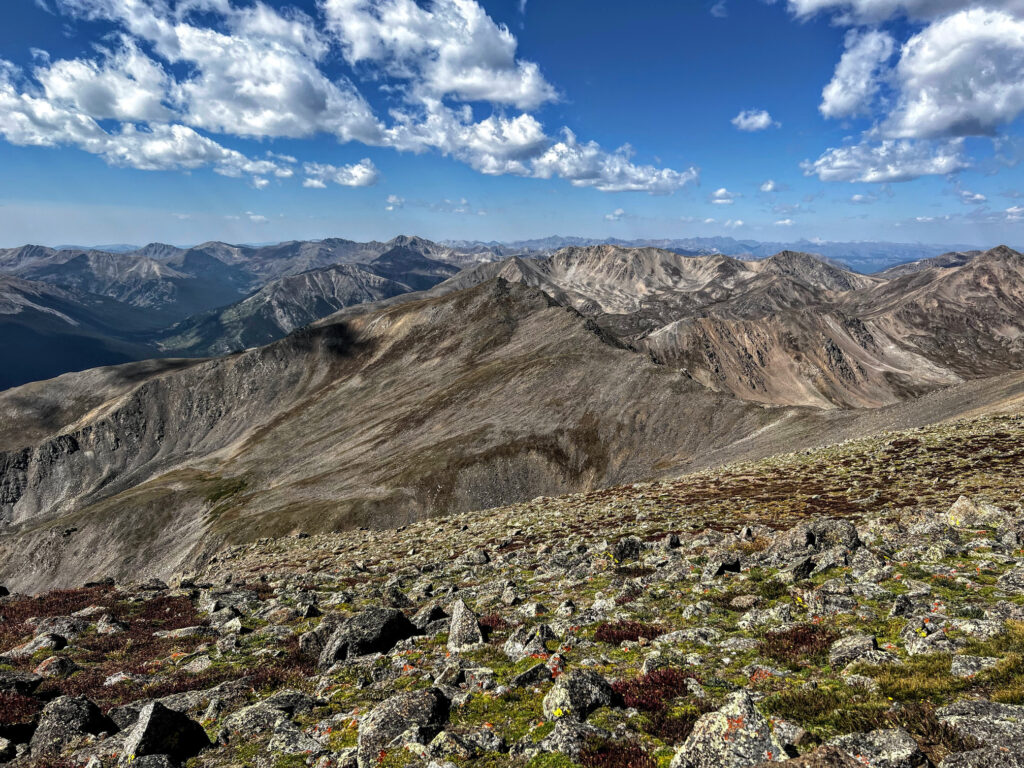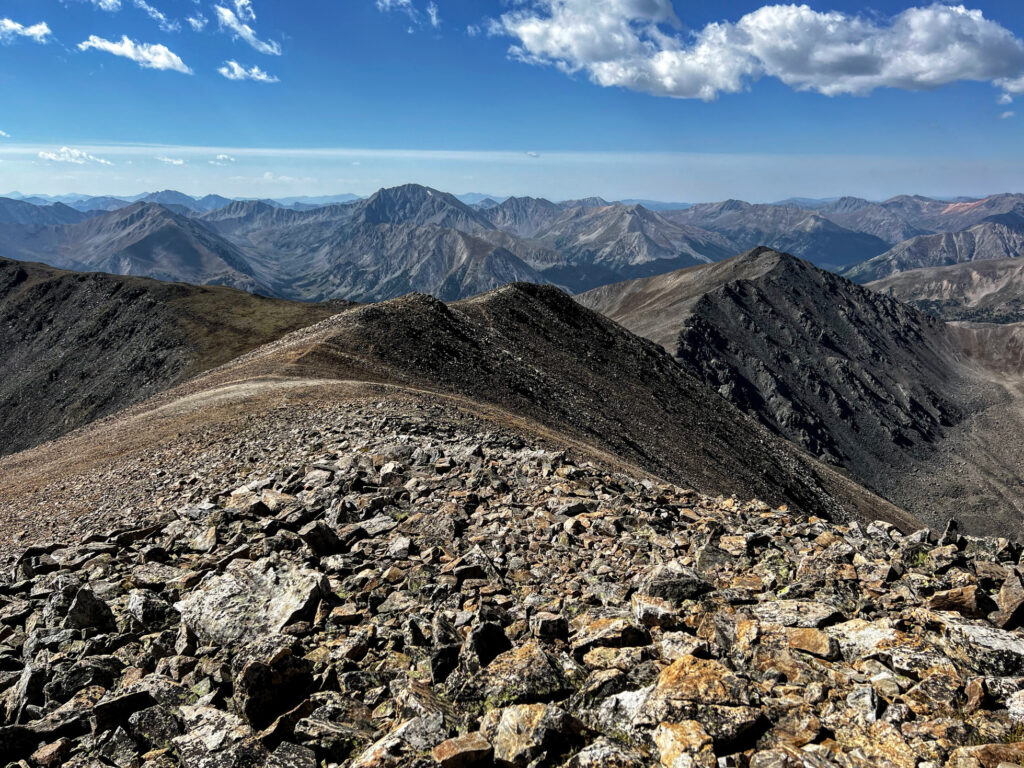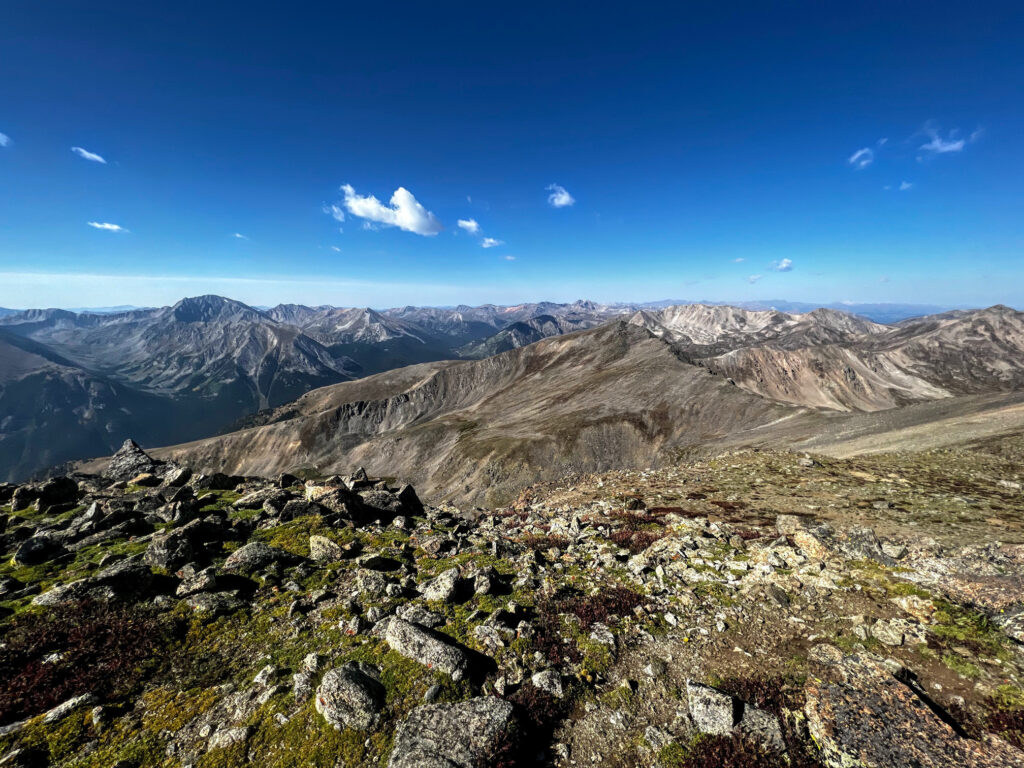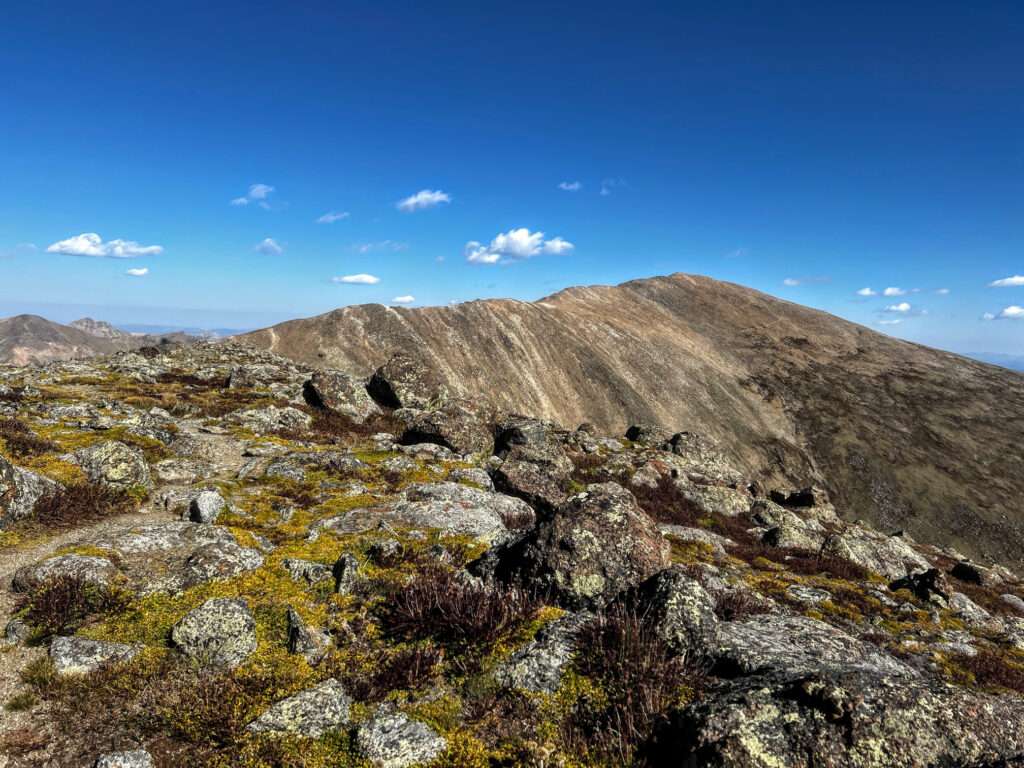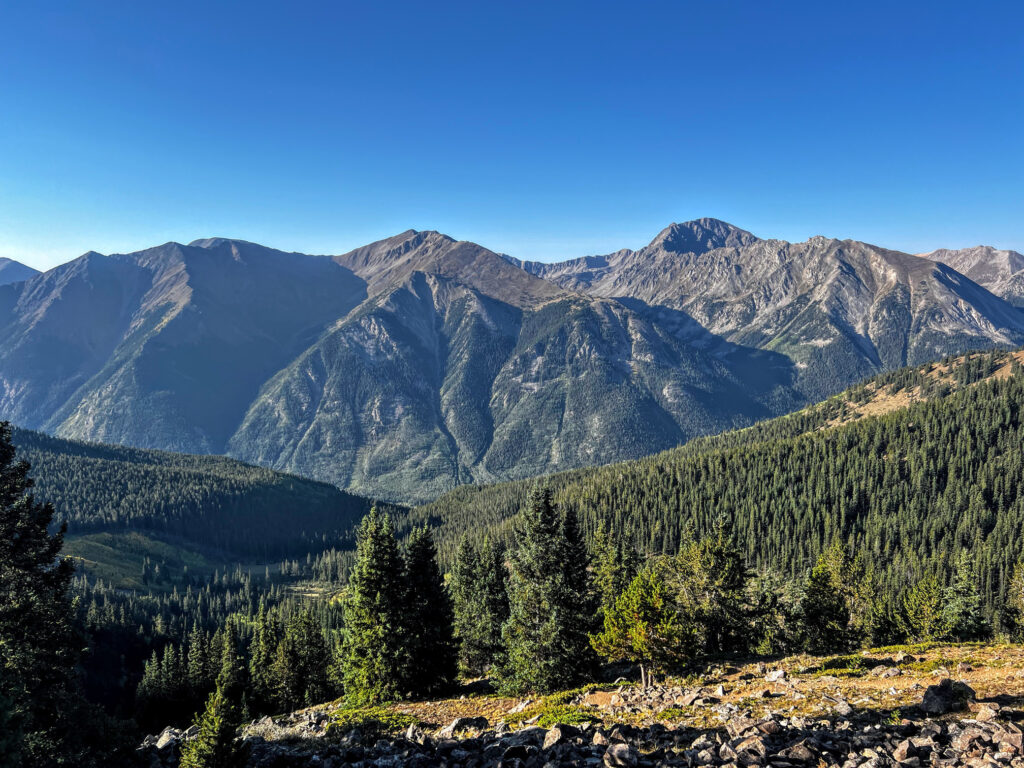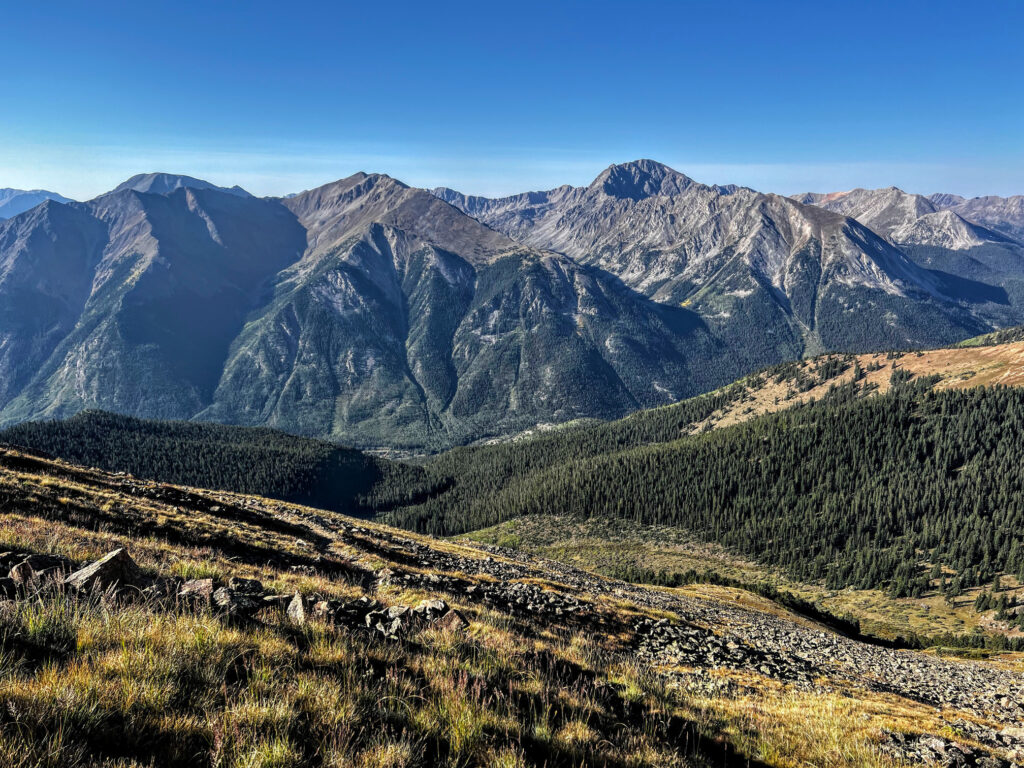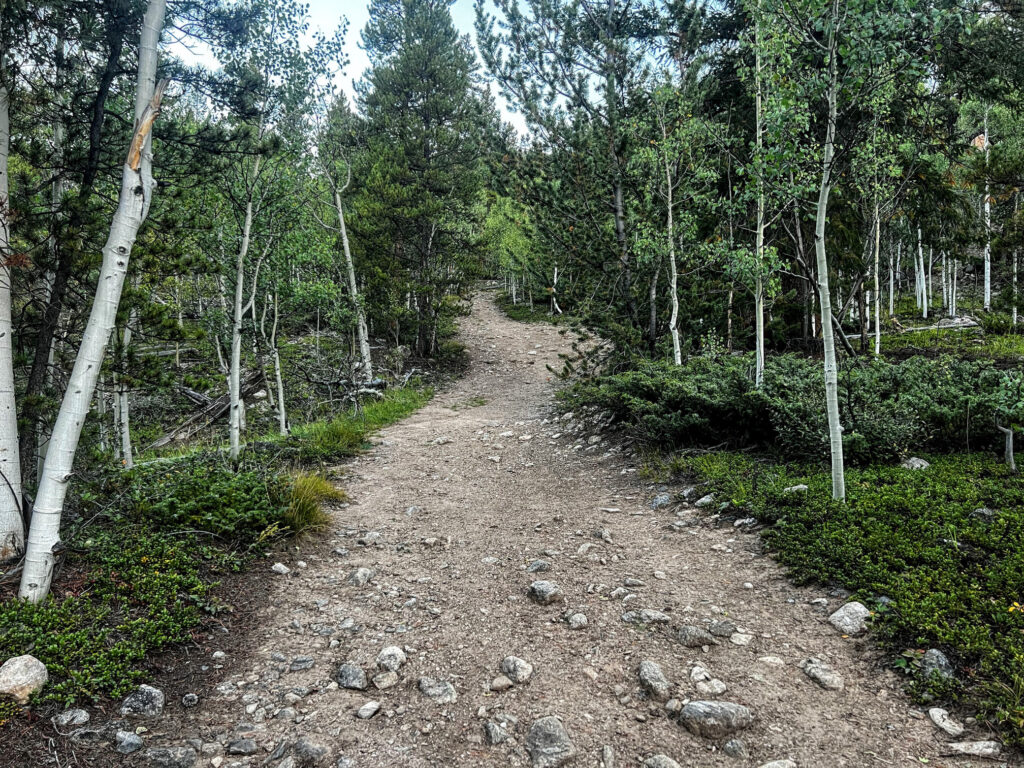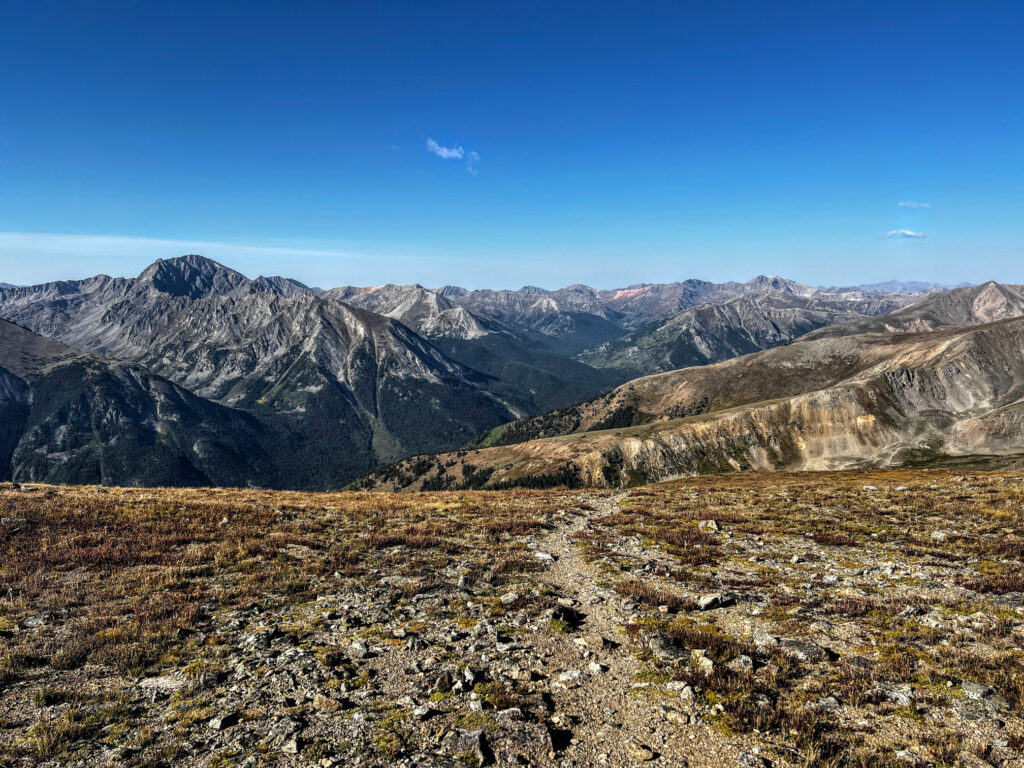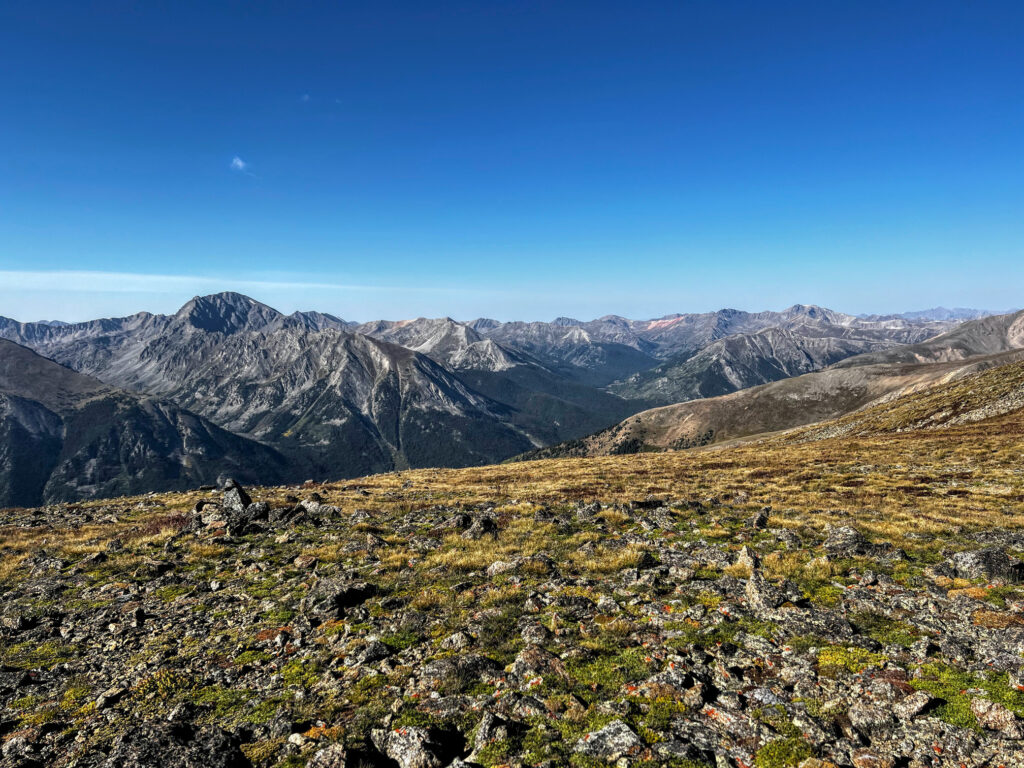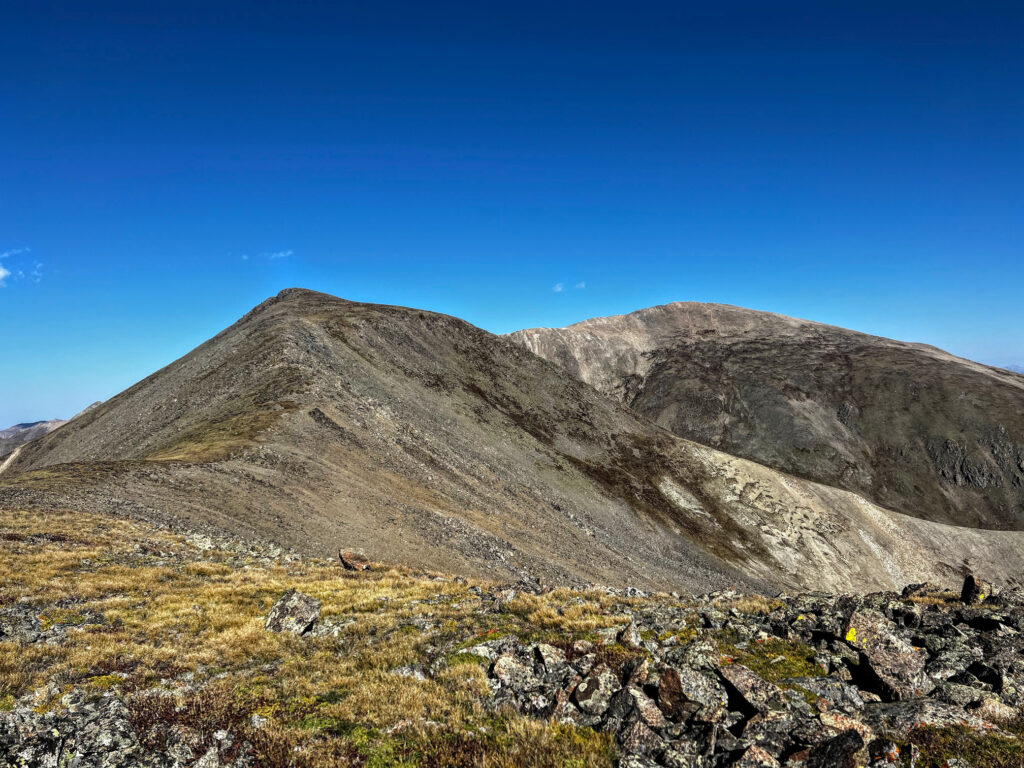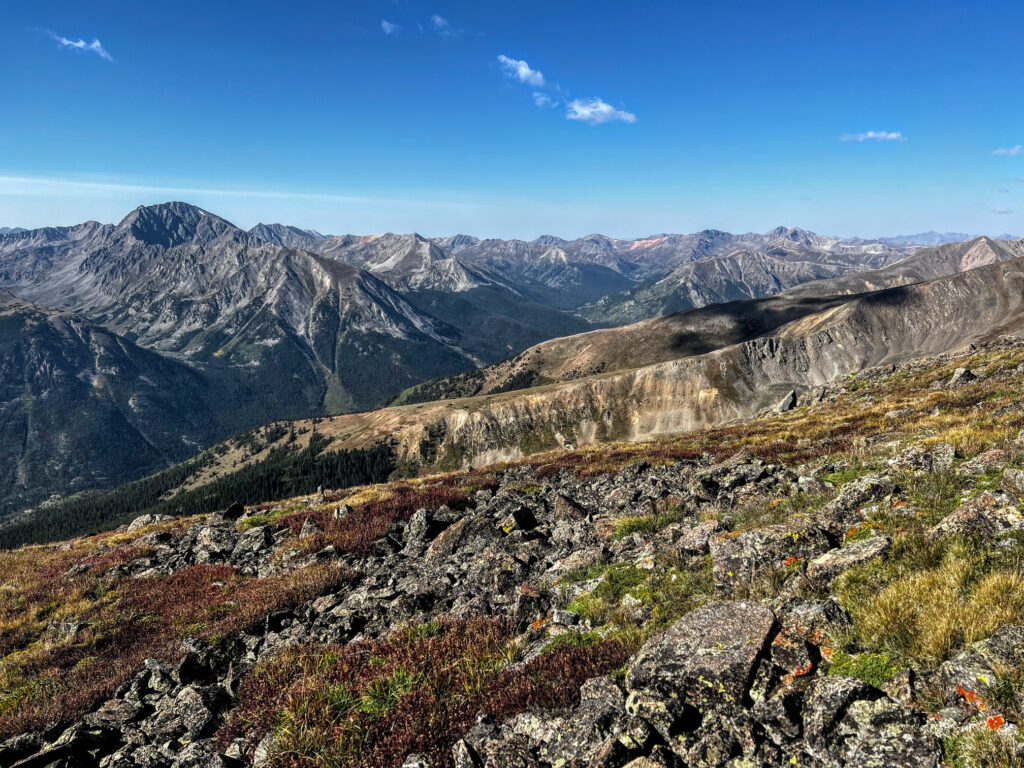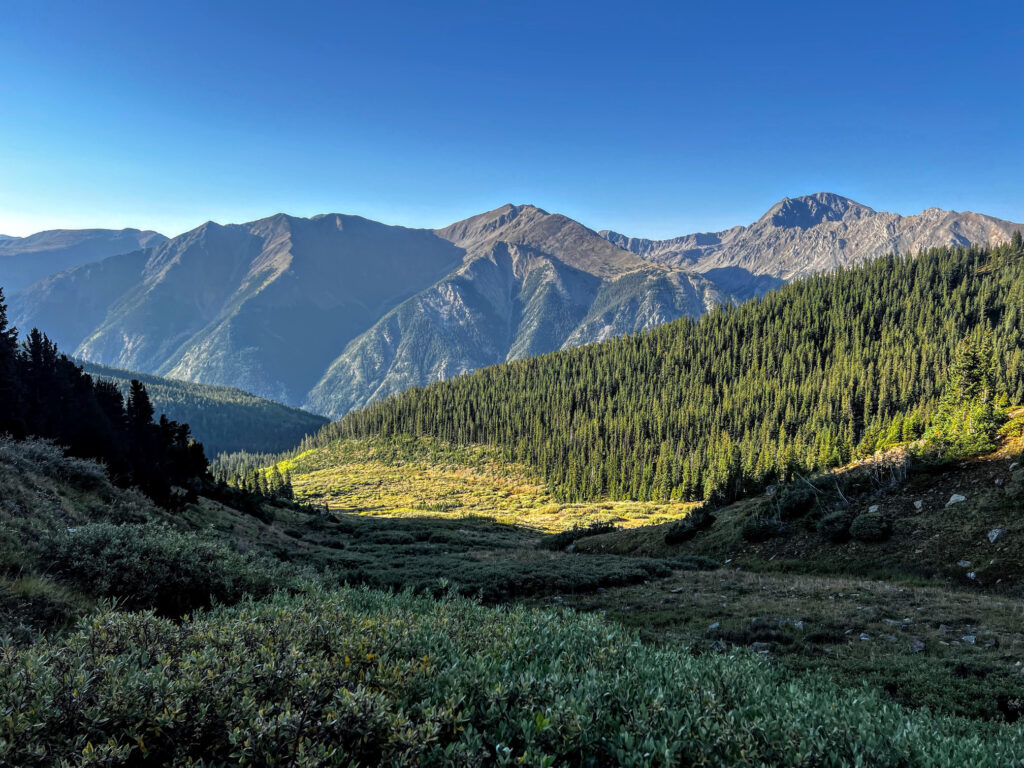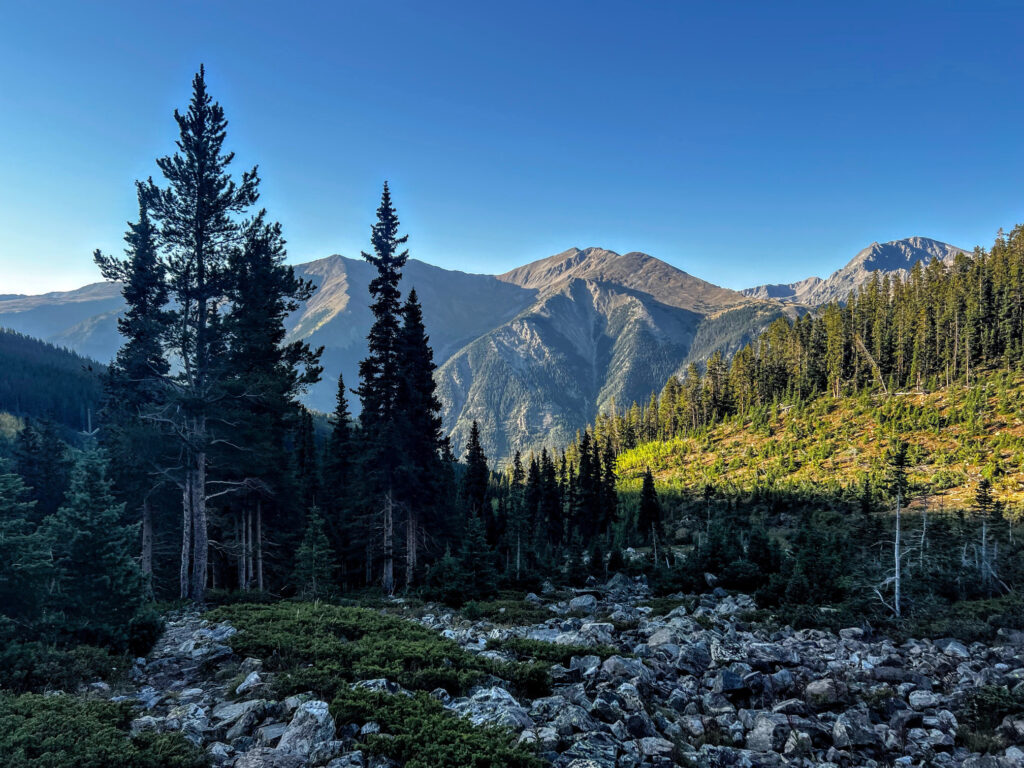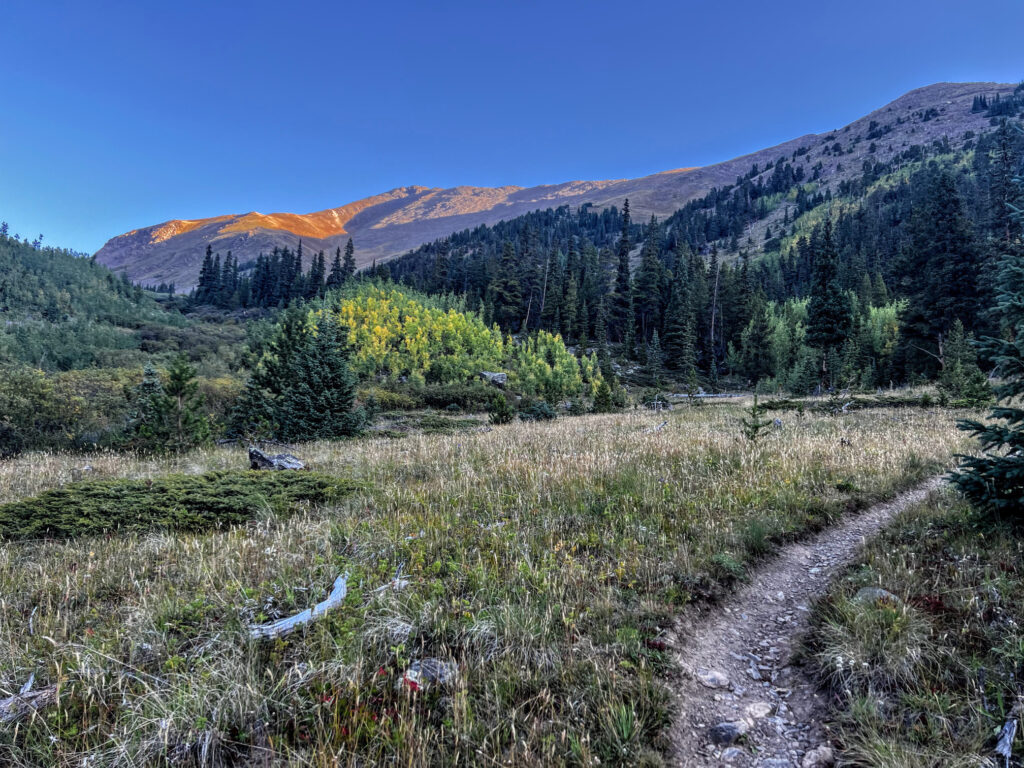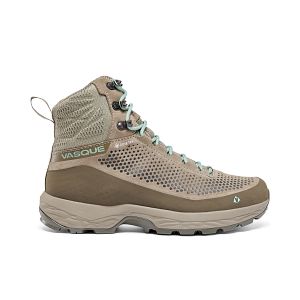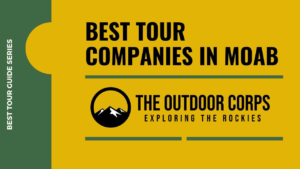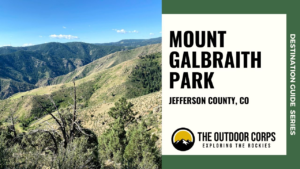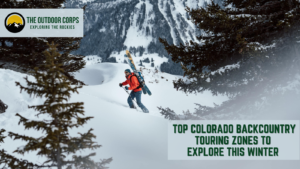Mount Elbert (14,440ft.) is a 14er mountain located near the town of Leadville in Colorado’s Sawatch Range, within the greater San Isabel National Forest. As the tallest mountain in the state of Colorado, the summit of Mount Elbert is one of the state’s most popular 14er destinations. Indeed, Mount Elbert holds additional notoriety as the second tallest peak in the contiguous United States, just behind California’s Mount Whitney.
There are several fairly easy-to-moderate routes to Mount Elbert’s summit, with the standard approach via the Class 1 Northeast Ridge beginning at the Mount Elbert Trailhead. However, since this standard route’s parking area is typically incredibly busy, we prefer an approach via the Class 2 Southeast Ridge that begins closer to Twin Lakes. This Southeast Ridge route is a 10.5 mile out-and-back roundtrip, with a steep 4,500ft. of elevation gain. Although this route is non-technical, it is by no means simple. Accordingly, we consider this route a challenging day hike, but achievable with proper preparation and training.
HIKE REVIEW SERIES: Mount Elbert
Mountain Information
Mount Elbert, the tallest mountain in Colorado, is named in honor of Samual Hitt Elbert, who was Governor of the then Colorado Territory from 1873-1874 and later served on the Colorado Supreme Court from 1876-1888. The first recorded ascent of Mount Elbert occurred in 1874 as part of a survey expedition led by Ferdinand Vandeveer Hayden.
Neighboring Mount Elbert is Mount Massive, Colorado’s second tallest peak at 14,421ft. For a time, there was considerable debate over which mountain was truly the taller peak given the slight height difference. Mount Elbert’s original elevation measurement was adjusted from 14,433ft. to 14,440ft. and to this day continues to be noted as the tallest peak in the state.
As with nearly every Colorado 14er mountain, Mount Elbert is extremely popular. Of course, this popularity is even more pronounced because of its distinction as the highest peak in Colorado. Expect a big crowd at the summit and moderate to heavy trail traffic depending on the route. Thus, we recommend planning to hike Mount Elbert on a weekday and consider camping nearby for an early start.
Mount Elbert
- Summit Elevation: 14,440ft.
- Range: Sawatch
- Location: San Isabel National Forest
- Nearest Town: Leadville
Trail Guide
Route Information
- Route: Southeast Ridge
- Class: 2
- Type: Out-and-Back
- Trailhead: Black Cloud
- Trailhead Elevation: 9,929ft.
- Route Length: 10.5 miles
- Elevation Gain: 4,511ft.
Route Overview
The Class 2 Southeast Ridge route to Mount Elbert begins at about 9,900ft. at the Black Cloud Trailhead. This is a small, secluded parking and camping area just off of CO-82. Indeed, with this route you’ll be rewarded with far less trail traffic than the standard Class 1 Northeast Ridge route.
Start on the trail by passing some dispersed camping spots and be prepared for a gradually steep initial ascent. The trail switchbacks through dense forest with aspen trees and alongside Black Cloud Creek. Cross Black Cloud Creek on a makeshift log bridge at about 1 mile into the ascent near 10,900ft.. Next, in another .2 miles cross the creek again via a second log bridge around 11,070ft.. The trail leads out of dense forest with views of Bull Hill (13,761ft.) ahead and to the left, with improving views of La Plata Peak (14,336ft.) and Rinker Peak (13,783ft.) behind.
The trail steepens considerably around 12,050ft. heading northeast towards Mount Cosgriff (13,566ft.) and up to the ridge line towards the South Elbert sub-summit (14,130ft.). Much of the trail is along solid terrain, though expect occasional sections of loose scree. Around 13,500ft., turn left heading to South Elbert with views of Mount Elbert’s summit in the distance. Be prepared for about another two miles of high elevation exposure. Thus, a very early start for this hike is highly recommended. Once atop South Elbert, about a mile of steep ridge hiking remains to reach the Mount Elbert summit.
Although the Black Cloud route is less busy, plan for crowds atop the peak. Summit crowds aside, enjoy an impressively expansive vista of the Sawatch Range, with La Plata Peak prominent to the south and neighboring Mount Massive to the north. Descend via doubling back from the summit and retracing steps back to the Black Cloud Trailhead parking area.
Planning Tips
Getting There
From Leadville, CO, continue on US 24 through town for approximately 14 miles. Reach the junction with Highway CO-82 and turn right heading west toward the town of Twin Lakes. Stay on CO-82 W for about 10.5 miles, passing the Twin Lakes and a few campgrounds (Whitestar, Parry Peak, and Twin Peaks) on your left. Once past the Twin Peaks Campground on CO-82 W, be prepared to make an abrupt right turn into the Black Cloud Trailhead parking area.
Parking
The Southeast Ridge route to Mount Elbert begins at the Black Cloud Trailhead just off of Highway 82 past the town of Twin Lakes. There is very limited parking space in this heavily wooded area. However, there are a few dispersed campsites if camping is of interest. Do plan to arrive early to secure a spot.
Camping
If you plan to hike the Class 2 Southeast Ridge route, there are several dispersed campsites near the Black Cloud trailhead, which is located off of Highway 82 near Twin Lakes. If these sites are full, just down the road on Highway 82 is the Twin Peaks Campground with 35 sites, which are first-come, first served. Also, the Parry Peak Campground is a first-come, first served campground a short distance down the road. Lastly, closer to the town of Twin Lakes is the Whitestar Campground which is reservable in advance on recreation.gov.
Pets
Dogs are permitted on leash. However, if you do opt to bring your pet, please be considerate of others by keeping your pet on leash and picking up/packing out any dog waste.
Weather Forecast
Always check the weather forecast before venturing into alpine country. Thunderstorms and lightning are frequent occurrences in Colorado during the summer time, so plan ahead for your Mount Elbert 14er summit adventure.
RECOMMENDED HIKING APPAREL AND GEAR
Ten Essentials
When hiking in Colorado, you should always be prepared for sudden changes in weather, especially on 14er hikes. Therefore, you should carry the appropriate type and amount of gear, clothing, food, water, and other essentials. For certain, make sure that your packing list includes the Ten Essentials. It’s best to always be prepared!
Hiking Boots
The Vasque Torre hiking boots are incredibly lightweight, provide excellent traction, and are quite affordable for their versatility. We like the Vasque Torre’s for everyday hiking that includes a bit of scrambling. In addition, with the “GORE-TEX” construction, you don’t have to worry about damp feet if the weather turns or you have to splash through streams or puddles along the way.
Hiking Pants
We love prAna’s hiking pants for their quality and versatility. Indeed, their Zion (for men) and Halle (for women) are great on- and off-trail, especially for travel. Constructed with a durable UPF-50 fabric, a water-repellant finish, and utility pockets, these have become a staple in our wardrobe. Remember that it can be rather chilly at alpine elevations, so consider hiking pants rather than shorts (both for warmth and sun protection).
Hiking Shirt
It can get chilly during alpine outings, particularly when you start early in the morning. Therefore, we typically opt for a long sleeve but lightweight shirt to keep us warm when it’s cold, but keeps us cool when we are working up a sweat later in the day. The no-cotton rule applies to shirts just as it does for pants and other articles of clothing.
Our preferred hiking shirt in the summer is Outdoor Research’s Echo Hoody because of its UPF sun protection qualities and lightweight (4oz.) breathable construction. The shirt has a hood for added neck protection and has thumbholes to protect your hands from sun exposure, if you opt to not wear sun gloves. Outdoor Research also makes different varieties of the Echo shirt (e.g., quarter zip, long sleeve without hood, t-shirt, etc.) if you prefer another style.
Insulated Jacket
The Arc’teryx Atom is easily our favorite insulated jacket. Yes, there may be lighter weight alternatives on the market, but we love the style, fit, packability, and function. Wear the Atom during early morning starts or when you reach the mountain summit. It’s a great addition to an outdoors wardrobe and comes in handy when the temperature dips.
Hiking Socks
For most of our hiking needs, we like Darn Tough socks over the multitude of options on the market. They last long and have an ironclad guarantee. In addition, Darn Tough has a variety of designs, ankle lengths, and cushioning options to choose from. We like the Hiker quarter length with light cushioning.
Headwear/Face Covering
We often wear a Buff as a neck gaiter to protect from the sun, given its UPF 50 protective construction. Buffs are also a great option to use as a face covering on the trail. In fact, there are 12+ ways of wearing a Buff, so it’s a versatile piece of gear.
Day Pack
To summit Mount Elbert, we like REI Co-op’s Flash 22L pack for its affordability, lightweight design, and overall versatility. This pack has enough storage for a day hike and side pockets are available to store Nalgene bottles or other equipment. It is also hydration reservoir compatible. We think the 22L version has the perfect capacity, though REI does have an even smaller Flash 18L with a drawcord top.
Trekking Poles
Although trekking poles are optional and a matter of preference, we prefer to use them for added stability. We recommend choosing the lightest weight poles your budget can afford. The Black Diamond Distance Z is our top choice due to its extremely lightweight construction. If you are seeking just one pole, rather than two, consider Gossamer Gear’s LT5, which can be purchased individually.
recommended books
We recommend bringing along a topographical map of the area — try the “Outdoor Trail Maps Colorado 14ers Series Sawatch Range Map Pack” for an affordable way to purchase multiple maps at once, including one for Mount Elbert. A good topographical map is always nice to have in addition to a GPS device, if you’re using one. In addition, we included a couple of our favorite field guides for plant and bird identification to aid in the enjoyment of your outdoor adventure. Lastly, we included Gerry Roach’s “Colorado’s Fourteeners: From Hikes to Climbs” guidebook, which is the best print guide available for hiking Colorado’s 14ers. It provides an amazing amount of information on Mount Elbert and other 14er hikes in Colorado that may be of interest.
- Colorado’s Fourteeners: From Hikes to Climbs
- A Climbing Guide to Colorado’s Fourteeners
- Colorado 14ers: The Standard Routes
- Outdoor Trail Maps Colorado 14ers Series Sawatch Range Map Pack
- Rocky Mountain Wildflowers Field Guide
- Roadside Geology of Colorado
- Mammals of Colorado Field Guide
- American Birding Association Field Guide to the Birds of Colorado
- Sibley Birds West: Field Guide to Birds of Western North America
Disclosure: Please note that this post contains affiliate links. We may receive a small commission if you buy a product or service through an affiliate link. This revenue helps us provide readers with helpful content to plan amazing adventures.

